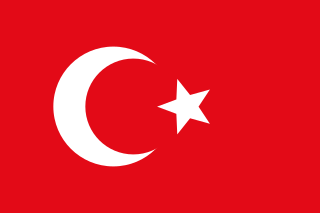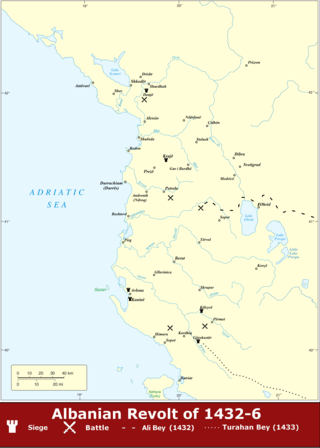Related Research Articles

The sipahi were professional cavalrymen deployed by the Seljuk Turks and later by the Ottoman Empire. Sipahi units included the land grant–holding (timar) provincial timarli sipahi, which constituted most of the army, and the salaried regular kapikulu sipahi, or palace troops. However, the irregular light cavalry akıncı ("raiders") were not considered to be sipahi. The sipahi formed their own distinctive social classes and were rivals to the janissaries, the elite infantry corps of the sultans.

The administrative divisions of the Ottoman Empire were administrative divisions of the state organisation of the Ottoman Empire. Outside this system were various types of vassal and tributary states.

Timariot was the name given to a Sipahi cavalryman in the Ottoman army. In return for service, each timariot received a parcel of revenue called a timar, a fief, which were usually recently conquered plots of agricultural land in the countryside. Far less commonly, the sultan would grant a civil servant or member of the imperial family a timar. Also non-military timar holders were obliged to supply the imperial army with soldiers and provisions.
Isa-Beg Ishaković was an Ottoman Bosnian general and the governor of the Sanjak of Bosnia for most of his career. Of Bosnian noble origin, he was recruited after being held hostage by the Ottomans. He was a provincial governor during the 1450s and 1460s, first in charge of the Sanjak of Skopje, and then the Sanjak of Bosnia. He was instrumental in the Ottoman conquests in the region, and was one of the Sultan's most trusted generals.
Sanjak-bey, sanjaq-bey or -beg was the title given in the Ottoman Empire to a bey appointed to the military and administrative command of a district, hence the equivalent Arabic title of amir liwa He was answerable to a superior wāli or another provincial governor. In a few cases the sanjak-bey was himself directly answerable to Istanbul.
Vladislav Hercegović was oldest son of Stjepan Vukčić. The Kosača noble family held lands in the region known as Humska zemlja, later named Herzegovina.
A timar was a land grant by the sultans of the Ottoman Empire between the fourteenth and sixteenth centuries, with an annual tax revenue of less than 20,000 akçes. The revenues produced from the land acted as compensation for military service. A holder of a timar was known as a timariot. If the revenues produced from the timar were from 20,000 to 100,000 akçes, the land grant was called a zeamet, and if they were above 100,000 akçes, the grant would be called a hass.

Herzegovina is the southern and smaller of two main geographical regions of Bosnia and Herzegovina, the other being Bosnia. It presently does not have strictly defined administrative borders; however, in the past it was organized as Sanjak of Herzegovina and Herzegovina Eyalet (1833–1851).

Stjepan Vukčić Kosača (1404–1466) was a powerful Bosnian nobleman who was politically active from 1435 to 1465; the last three decades of Bosnian medieval history. During this period, three kings acceded to the Bosnian throne: Tvrtko II, Thomas (Tomaš), Stephen Tomašević (Stjepan Tomašević) and anti-king Radivoj—the older brother of King Thomas—before the country was conquered by the Ottomans.

The Kingdom of Bosnia, or Bosnian Kingdom, was a medieval kingdom that lasted for nearly a century, from 1377 to 1463, and evolved out of the Banate of Bosnia, which itself lasted since at least 1154.

The Sanjak of Albania was a second-level administrative unit of the Ottoman Empire between 1415 and 1444. Its mandate included territories of modern central and southern Albania between Krujë to the Kalamas River in northwestern Greece.

The Sanjak of Scutari or Sanjak of Shkodra was one of the sanjaks of the Ottoman Empire. It was established after the Ottoman Empire acquired Shkodra after the siege of Shkodra in 1478–9. It was part of the Eyalet of Rumelia until 1867, when it became a part, together with the Sanjak of Skopje, of the newly established Scutari Vilayet. In 1912 and the beginning of 1913 it was occupied by members of the Balkan League during the First Balkan War. In 1914 the territory of Sanjak of Scutari became a part of the Principality of Albania, established on the basis of the peace contract signed during the London Conference in 1913.
Mihaloğlu Ali Bey or Gazi Alauddin Mihaloğlu Ali Bey, (1425–1507) was an Ottoman military commander in 15th century and the first sanjakbey of the Sanjak of Smederevo. He was one of the descendants of Köse Mihal, a Byzantine governor of Chirmenkia and battle companion of Osman Gazi.
The Albanian nobility was an elite hereditary ruling class in Albania, parts of the western Balkans and later in parts of the Ottoman world. The Albanian nobility was composed of landowners of vast areas, often in allegiance to states like the Byzantine Empire, various Serbian states, the Republic of Venice, the Ottoman Empire and the Kingdom of Naples in addition to the Albanian principalities. They often used Byzantine, Latin or Slavic titles, such as sebastokrator, despot, dux, conte and zupan.

Pavlo-Kurtik was an administrative unit within the sanjak of Albania, Ottoman Empire, which had jurisdiction to the south of Tirana, between the Erzen and Shkumbin rivers. It was one of 9 vilayets of the Arvanit-ili province until 1466. Pavlo-Kurtik was first mentioned in the first defter of the Sanjak of Albania (1431–1432).

The Albanian revolt of 1432–1436 was a series of conflicts between Albanian rebels and the Ottoman Empire during the early period of Ottoman rule in the region. Prompted by the replacement of large parts of the local nobility with Ottoman landowners, centralized governance, and the Ottoman taxation system, the population and the nobles, led principally by Gjergj Arianiti, revolted against the Ottomans.
The Sanjak of Sofia was one of the sanjaks of the Ottoman Empire which county town was Sofia. It was founded in 1393 and disestablished after the creation of the Principality of Bulgaria in 1878.

Vlatko Hercegović, was the second and the last Herzog of Saint Sava, succeeding his father Stjepan Vukčić in 1466.

Ajas Pasha was a Bosnian sanjak-bey and later pasha in Ottoman service.

The Humska Zemlja, also Hum, is a historical zemlja that arose in the Middle Ages as well-defined administrative unit of medieval Bosnia ruled by the Kosača dynasty. It included most of today's Herzegovina, in Bosansko Primorje including Konavle, territories on the south of Dalmatia between Omiš and Neretva Delta, in Boka Kotorska and south to Budva. The name for this zemlja derived from the earlier name for the region, Zahumlje. The seat of Kosače family was in the town and fortress of Blagaj and during the winter seasons, Novi.
References
- ↑ Skripta za studente: OSMANSKO CARSTVO Temeljni pojmovi i državno uređenje (in Croatian). Zadar, Croatia: Sveučilište u Zadru (Zadar Univerzity).
SUBAŠA – Upotrebljavan u više značenja; 1. Vojno-administrativni zapovjednik većih naselja od samih početaka Osmanske države; Vojno-administrativni upravnik vilajeta koji su po tome nazivani subašiluci, u stvari područja krajišta. Uslijed ekspanzije turske države subašiluci su bivali pretvarani u zijamete, dok su ostajali oni u graničnim područjima. Ovi prvi bi postajali sandžakbegovi ljudi i upravitelji hasova te vršili administrativno-policijsku vlast na tim prostorima. S druge strane, osnivanjem ziameta, svaki zaim dobio bi titulu subaše.
- ↑ Spandouginos, Theodōros (1977). On the origin of the Ottoman emperors. Cambridge University Press. p. 124. ISBN 0-521-58510-4.
When a sanjak bey ... or holder of timar...gets more than 15.000 aspres from his holdings he becomes subaşi (Subassi), or holder of subaşilik within a Sanjak
- ↑ Ćirković 2004, pp. 112.
- ↑ Kenneth Setton (1976–1984), The Papacy and the Levant, 1204-1571, vol. four volumes, American Philosophical Society, ISBN 978-0-87169-114-9,
... Subashi (Ven. Subassi) was the commandant of town or castle, in which he exercised the functions of security officer, or chief of police.